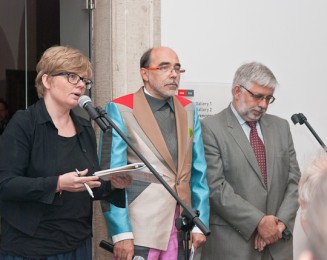Karol Sienkiewicz: The previous director of the CCA, Wojciech Krukowski, ruled the Castle for 20 years. When an international competition for the new director was announced, the general opinion was that the Castle was in deep crisis. The expectations of the new director were very high. How did you feel in that situation?
Fabio Cavallucci: I knew a little bit about the general situation in Poland and about the Castle before I came to Warsaw. Frankly speaking, I had already thought about the Castle as a potential place to work a few years ago. I met Wojciech Krukowski in 2007 at the opening of Wilhelm Sasnal’s exhibition at the Zachęta gallery. I came because the exhibition was made in cooperation between the Zachęta and Galleria Civica in Trento, of which I was the director at the time. And Krukowski told me, “I’m going to finish the Laboratory space project and afterwards I will retire.” Then I told Katarzyna Kozyra and Hanna Wróblewska that perhaps the Castle should be my place. They said, “Forget it. They will never nominate a non-Polish director there.” So I forgot about it for a few years. When they put out an official call for applications, I hadn’t been in Trento for two years. I was curating the Biennial in Carrara. So I was very busy but I wanted to participate in the competition.
I knew the general situation of art in Poland. And if I am here, it’s because I like Polish art. I came to Poland in 2000 for a trip organised by the Adam Mickiewicz Institute. I was invited along with other Italian curators. I appreciated Polish art so much that I started holding exhibitions of Polish artists. I met Katarzyna Kozyra, who became my girlfriend. And I established a more direct connection with Warsaw. I came here from time to time, and I gained more in-depth knowledge of Polish art, which is, in my opinion, among the best in Europe. Nobody in Italy believed that 10-15 years ago.
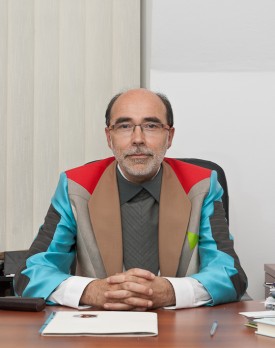 Fabio Cavallucci wearing a suit
Fabio Cavallucci wearing a suit
designed by Katarzyna Przezwańska
courtesy of Galeria Kolonie
I’ve always worked in fields that connect all arts. For instance, a lot of my work involves performance. In Trento I established an international prize for performance arts. I have produced more than 500 performances in my life, some of them very important, with prominent artists. The Castle is not a museum, it is a Centre for Contemporary — let’s say — Arts, with music, theatre, cinema… That’s why I thought it would be the right place for me. I think it is one of the best ways to develop art, i.e. in the crossroads that put together different fields.
It’s a paradox that all the institutions of this type, i.e. centres for contemporary arts, are in crisis. In my view they should be regarded as the most important and interesting institutions, as they have the ability to connect arts. But in reality they are in crisis. I mean the Castle, the ICA in London and other CCA’s around the world. They were never able to put together arts. They always worked in separate departments, separate fields. So at the ICA in London cinema was cinema, music was music, visual arts were visual arts and nothing else, there was no connection between them. Of course, in a way it is our mental structure that makes us think about things this way. We graduated from schools in which we were used to studying separated matters. There are no people who are really experienced in all these fields at once. I can say I’m experienced in visual arts and performance, but I don’t know enough about music. When you make an event in which you combine visual arts, music, performance, or theatre, journalists don’t write about it, because there is no journalist who is able to write about that kind of event. But I believe that we are heading towards an age when the barriers between the fields will become less and less present. Technologies has already become performative: we put together sound, action, interaction, and vision. The museum in the past was a place where you could only look. You couldn’t eat a piece of chocolate, you couldn’t speak, you couldn’t listen to anything, you could only look. But our bodies are not that separated. We are heading towards an age when we will use all our senses. So this is one of the most important parts of our research. How do we put things together? How do we put together different kind of perceptions?
You have separate departments at the Castle: a curator for dance, a curator for music, a curator for theatre, curators for visual arts and so on…
The first strategy was to start having meetings together. In the past, meetings of curators took place once or twice a year. Now we have meeting every 10-15 days. Of course we maintain some projects that are separate, but we try to make projects that put together different experiences, like ”Laboratory of the Future”, in which several curators work together.
The system that director Wojciech Krukowski developed was a very specific and clever one. There was no money, so he invented a mechanism that enabled him to make efficient use of people’s energy. Everybody worked on his or her own specific project. When you work on your specific project, you put a lot of energy into it. If you work for an institution, you’re less involved. This mechanism worked very well for twenty years. Now it should be refreshed.
The Castle is a public institution so we do not work for ourselves. We are working for art, first of all, and for Poland, the world, and the good of everyone. We should be aiming at this level, not at working in a small department for ourselves. So the first way to get things moving is to start having meetings and start doing some common projects. It’s not easy. It’s very hard. But I’m very optimistic.
A year ago, as the newly-appointed director, you said in an interview for Gazeta Wyborcza that the Castle was too small. Or maybe the Castle had too many activities.
In a way it is too small. But Warsaw is so huge. It is true that we have too many things here. So when you want to fit everything in one place, the place becomes too small. But I wouldn’t follow in the footsteps of Gregor Muir, the new director of the ICA in London. He said: OK, if we cannot afford to cover everything, let’s just focus on visual arts — of course visual arts combined with performance, music, and so on. There are a lot of artists who work this way. Institutions have trouble organising things in a mixed fashion, but art has already been working in a mix of fields for many decades. By going this route, the ICA lost its specificity. Why should London have yet another institution of this type when there are already galleries and museums focused on visual arts like the Tate Modern, the Hayward Gallery, the Tate Britain, the Barbican, etc. So I would never imitate this idea. I think we should maintain the departments of music, theatre, and cinema here at the Castle. We would like to start producing movies and launch an internet television station. We’re thinking of expanding some fields but trying to make them work together. However, we also need to be careful, because when we have a lot of departments the Castle becomes too small. So we should try to better understand which programs to focus on, which are still good for now, and which are perhaps not needed anymore.
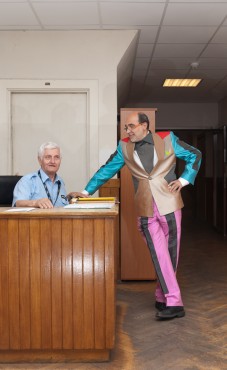 What about such areas of activity as the collection or the residency program?
What about such areas of activity as the collection or the residency program?
The residency program is a very important and successful part of our activity. But we still need to develop it in a certain way. My opinion is that program is not fully formed yet. This is something I am discussing with Ika Sienkiewicz: the responsibilities of the Art in Residency program. In a few years Warsaw will become a place that draws foreign artists. But we have to investigate how to develop the residency program in a way that is best for us as an institution. It could be a way to connect different fields, or artists from different fields, and maybe ask them to make specific projects here. But we should ask what artists are able to give us, what they can give Warsaw.
The collection is also history in a way. The collection of the Castle reflects not only the history of the Castle, but the history of Polish art as well. In the beginning there was no other institution dedicated to contemporary art, and as a result of that many important artworks are now in this collection. I don’t think we should stop expanding the collection. For instance Mirosław Bałka had an important exhibition here with important and very strong pieces. Why not have a trace of that important exhibition in the collection? The collection should grow, even if the collection is not exhibited in the Castle but somewhere else. I want to try to show the collection in other buildings all around Warsaw. We were finally able to open a small but interesting exhibition of the collection at Teatr Wielki, curated by Grzegorz Borkowski. This way we bring new energy to the collection.
Fabio Cavallucci
Fabio Cavallucci is an art critic and curator. He has served as the director of the Centre for Contemporary Arts Ujazdowski Castle since September 2010, and was previously the director of the Galleria Civica di Arte Contemporanea in Trento (2001–2008), the coordinator of Manifesta 7 in Trentino Alto Adige in 2008, and the artistic director of the 15th International Sculpture Biennale in Carrara (2010). He currently serves on the board of the Manifesta International Foundation. He has curated exhibitions and projects by such artists as Joseph Kosuth, Maurizio Cattelan, Katarzyna Kozyra, Paul McCarthy, Santiago Sierra, and Wilhelm Sasnal. He is a contributor to the art magazines Flash Art and Flash Art International.
How would you describe the program of the Castle?
Until now the Castle was a mixture of different, disconnected activities. Now we are working on three lines of development that, I admit, are still not clear. One is the “Office of Possibilities”. It is an internal discussion — one that goes on within the art system, but we would like to make that discussion open — about the development of the Centre for Contemporary Art. We have a lot of questions, for instance about internal organisation. My question is, should we become a Fordistic institution in which everybody is part of the mechanism, or a post-Fordistic institution in which everybody is able to make one thing from beginning to end.
Another line of development is “Postdocument”, which will appear early next year. It is a frame in which we will discuss the idea of documentation, so in a way the question of how the present becomes history. And the third line of development is ”Laboratory of the Future”. This year the subject of ”Laboratory” is “Regress / Progress”, next year it will be ”Politics and Power”. “Laboratory of the Future” is a frame in which we would like to investigate things that are connected with society. Of course we will continue to have exhibitions and projects that are not connected with any of those three lines.
So what are the CCA’s plans for the near future?
First of all, “Postdocument” is starting soon. We will hold an exhibition about Akademia Ruchu, the group led by the previous director Wojciech Krukowski. It’s our duty in a way, but I would also like to start to make exhibitions about theatre, dance, and music. There will be a project with Maurizio Cattelan. I know him very well and he’s also my friend, but this project was actually started before I came here. And we will hold a retrospective exhibition of Józef Robakowski in collaboration with the CCA in Toruń, which we would like to promote outside. I think it’s our duty. I also think he is one of the most important artists of this generation in the world. Of course, my work is now more about the reorganisation of the structure and the image of the institution. I hope that next year we will introduce a new visual identification for the Castle.
We are still not 100 percent sure about the program for last months of next year. You know in Italy the situation of culture is dire, but one thing is clear: at the end of the year the institution knows its budget for the coming year. In Poland you don’t know what to expect. You have a basic amount of money and then you have to constantly ask for more money, and you are never sure what you can make. Now I understand it better, and I know that the way it works is: OK, we just need to keep working, we will find the money somehow. We also opened a fundraising department and we are going to close our first agreement with a sponsor.
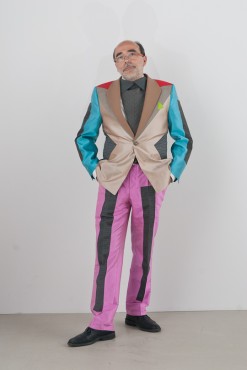 Warsaw has the Zachęta, the CCA, and the Museum under construction. How do you find the Warsaw art institution scene? And what’s the position of the Castle within it?
Warsaw has the Zachęta, the CCA, and the Museum under construction. How do you find the Warsaw art institution scene? And what’s the position of the Castle within it?
I think we, that is all these institutions, should work together, as we’ve already started to do. We should clarify our missions. I think there is enough space in Warsaw for three huge institutions. Because we have a lot to do and in the future we will have more and more to do. Warsaw will become one of the most important centres of art and culture in Europe. The situation is clear for the Zachęta, it’s a gallery, of course it has a collection, but it is not the most important part. The Zachęta gallery developed a few directions: there are geographic exhibitions, monographic shows of important Polish and international artists, etc. The biggest problem of the Museum, unfortunately, is that it doesn’t exist yet. I think Joanna Mytkowska is a very good director, she has ability to make a good program, and the ability to make the program attractive to the public. But the program of the Museum now is not the real program of the future museum. The future museum is the space where you have to exhibit and where you have to show your collection. When politicians and the government put money into erecting an institution of this kind, they want to see results. So at least a large part of the Museum’s work should focus on organising large-scale exhibitions. Until now, some of these exhibitions were done by the Castle. Our mission is clear, it’s to conduct research at the intersection between arts and between arts and society. Over the last 20 years the value of art has become increasingly based on its market value. But I think that the real value of art is when it is really connected to society, so that people can use art every day. When they can have contact with art, when they confront art, have interaction with art.
In Eastern European countries and post-Soviet states, the value of art was not market-based for almost fifty years. Such thinkers as Boris Groys hope that it can be a tradition to draw on.
I think we should use this specificity of Poland. I see two important countries in art in the last two decades, one is Great Britain and the other is Poland. There was also Switzerland in the middle, with very good and important artists like Pippilotti Rist, Tomas Hirschhorn, Fischli & Weiss, but without any recognizable movement, taste, or atmosphere, like Young British Artists in Great Britain and critical art in Poland. And what is interesting is that the two situations were very different. Giancarlo Politi, editor of “Flash Art” says that art was always connected with money. When you take Florence for instance, it was the centre of the financial system in Europe in the 15th and 16th centuries, and there were artists like Leonardo, Michelangelo, Raffaello and so on. And in fact, in Great Britain Young British Artists developed very well thanks to Saatchi, thanks to the British Council, and thanks to private and public investments and money. There was no money in Poland. Katarzyna Kozyra always tells me, “We didn’t even know we could sell it.” You can see that in their works, the works by Althamer, Kozyra, Żmijewski, and Libera. Of course they are on the market now, but they still don’t think in terms of the market, they haven’t incorporated market strategies. Althamer wants to make an artwork with children here in the Castle. That has nothing to do with the market.
We now have two possible directions. One direction is to keep the same system as the Western countries and develop the market. And in a way it does seem to be going in that direction. But the more important task is to develop another system. It wouldn’t be a communist system nor a capitalist one, but a third way. I’m speaking of art of course, but art is also a very important laboratory for society. So this is an important task: how do we make art something that is not just connected with money but is closer to people. The fact that Poland was once a communist country could give us this possibility. Of course the challenge is to avoid repeating our old mistakes and to go forward.
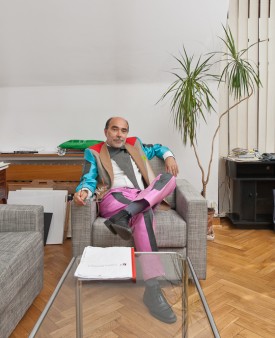 Would this the role of institutions increase in this new reality?
Would this the role of institutions increase in this new reality?
I think that now is the time of institutions. It’s like with retail trade. We had small shops, now there are big supermarkets. It doesn’t mean that we should become a big supermarket, but we should grow. Institutions have the opportunity to become recognizable places. Institutions shouldn’t just record what is going on. Their task is to set a course, to make decisions. To participate in the development of culture taking clear a strong position. In Poland that is possible, and it can be a model for all of Europe.
19 October 2011

